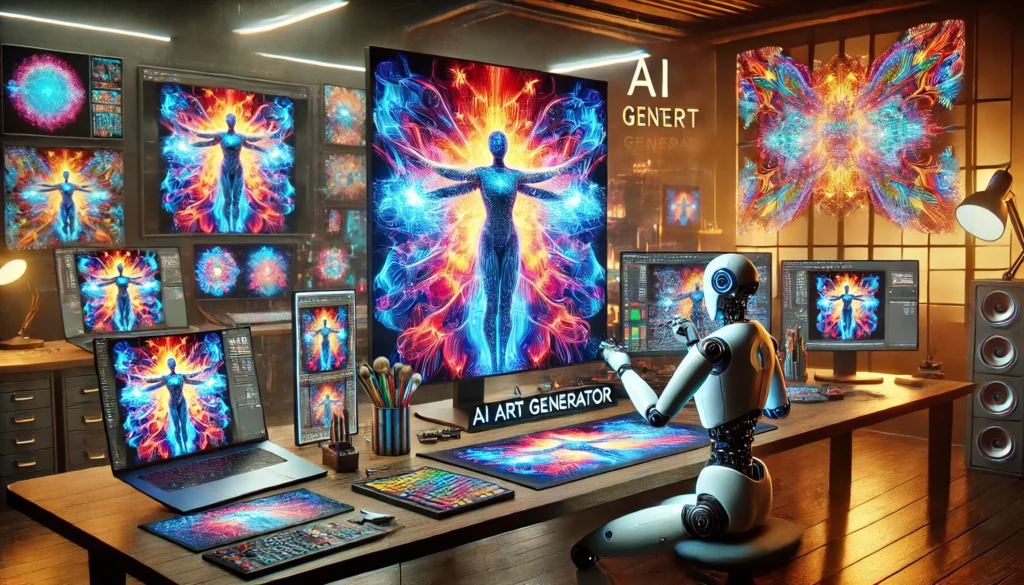Since then, the AI space has been going off the charts to new creative everything including the art of turning photos into high-quality works of art. There are a number of AI-powered tools to help you do this, but by building your own solution, you can customize the whole process to suit your own needs and preferences. Whether you wonder how to Create your AI Art generator from photo or visualize your art, this tutorial guide will take you through a step-by-step process needed to make that happen.
What is an AI Art Generator?
AI art generator is a software that can use machine learning algorithms for creating images from text. These systems are generally trained on colossal datasets of paintings and photographs, allowing them to learn and mimic different artistic styles. Creating your own AI art generator allows you to tailor its functionality and fine-tune its results to match your individual style.
Why Build Your Own AI Art Generator?
So, let’s take a look at some of the most convincing things to build your AI art generator from image instead of using existing tools:
- Creative Control: We asked you all about the styles, filters and techniques you applied to your photos, to make it more personal.
- Learning Opportunity: Learn how AI and machine learning works.
- Unique Results: Create truly unique pieces specific to your visions.
- Cost Efficiency: Reusable, no subscription needed for third-party services.
- Scalability: As required, expand the tool to accommodate larger data sets or more intricate transformations.
Essential Steps to Create Your AI Art Generator from Photo
Understand the Basics of AI and Machine Learning
Before getting started, it’s good to know the basics of AI, specifically how neural networks work with data. Image-based AI model relies on its underpinning technology which is known as Convolutional Neural Networks (CNNs). These networks pass images through several layers of small components (e.g., edges, colors), and analyze artistic patterns.
Free resources including online courses, YouTube tutorials or Google’s TensorFlow Playground can get beginners started with the required rudimentary concepts.
Choose the Right Framework
Several open-source frameworks make it easy to create an AI art generator. Popular options include:
- TensorFlow: General purpose framework for building machine learning models.
- PyTorch: Flexible and user-friendly (especially for image-related projects).
- RunwayML: Spoonacular is a user-friendly tool for non-coders who want to tinker with AI models.
- Both frameworks have their own strength, so choose a framework that best suits your experience level and the needs of your project.
Collect and Prepare Your Dataset
To create your AI art generator from photo, you need a robust dataset of images. Follow these steps to prepare your dataset:
- Gather Photos: Collect images you want to transform into art. This can include personal photos or publicly available images.
- Add Art References: Include artwork samples representing the styles you want your generator to mimic.
- Organize Your Dataset: Group images into categories for easier training.
- Preprocess Images: Resize, crop, and clean your images to ensure uniformity.
You can use tools like Adobe Photoshop or open-source alternatives like GIMP for preprocessing.
Select a Pretrained Model
Training an AI model from scratch can be time-consuming and computationally expensive. Instead, you can start with a pretrained model like:
- VGGNet: Excellent for image recognition and transfer learning.
- StyleGAN: Designed specifically for generating realistic and stylized images.
- DeepArt.io API: Allows easy integration of style transfer techniques.
By fine-tuning a pretrained model, you can save time and focus on customizing it for your project.
Train Your AI Model
Training your model involves teaching it how to apply artistic styles to your photos. Here’s a basic overview of the training process:
- Load Your Dataset: Use your organized and preprocessed images.
- Define Parameters: Set up learning rates, batch sizes, and other training configurations.
- Run the Training: Use your chosen framework to train the model. This process might take hours or days, depending on your hardware and dataset size.
- Monitor Performance: Use tools like TensorBoard to track your model’s progress.
Test and Refine the Generator
After training, test your AI art generator by inputting photos and evaluating the results. Pay attention to:
- Style Accuracy: Does the output match the desired artistic style?
- Resolution Quality: Are the images sharp and clear?
- Color Harmony: Are the colors consistent and appealing?
If the results aren’t satisfactory, you may need to fine-tune the model or expand your dataset to include more diverse examples.
Deploy Your AI Art Generator
Once your generator produces satisfying results, it’s time to make it accessible. Here’s how:
- Create a User Interface: Build a simple application or web interface for users to upload photos and receive artwork.
- Optimize Performance: Ensure the generator runs efficiently, especially for high-resolution images.
- Host Your Tool: Deploy your generator on a cloud platform like AWS, Google Cloud, or Heroku.
Tools and Resources You’ll Need
- Hardware: A computer with a powerful GPU or access to cloud computing resources.
- Software: Python programming language and the chosen framework (TensorFlow, PyTorch, etc.).
- Libraries: Image processing tools like OpenCV and data visualization tools like Matplotlib.
Tips for Success
- Start Small: Begin with a small dataset to understand the process before scaling up.
- Experiment with Styles: Test different artistic styles to see which ones resonate most.
- Collaborate: Join online communities to learn from other developers and artists.
- Keep Learning: Stay updated on the latest AI advancements to enhance your generator.
Conclusion
Creating an AI art generator using photos is a fun and fulfilling project that combines artistry with tech. This guide will walk you through the process of building a tool that can turn average images into breathtaking pieces of art. No matter if you are a developer, artist, or hobbyist, building your AI art generator from photo liberates tons of ideas to turn into reality and unleash the core of AI technologies.

